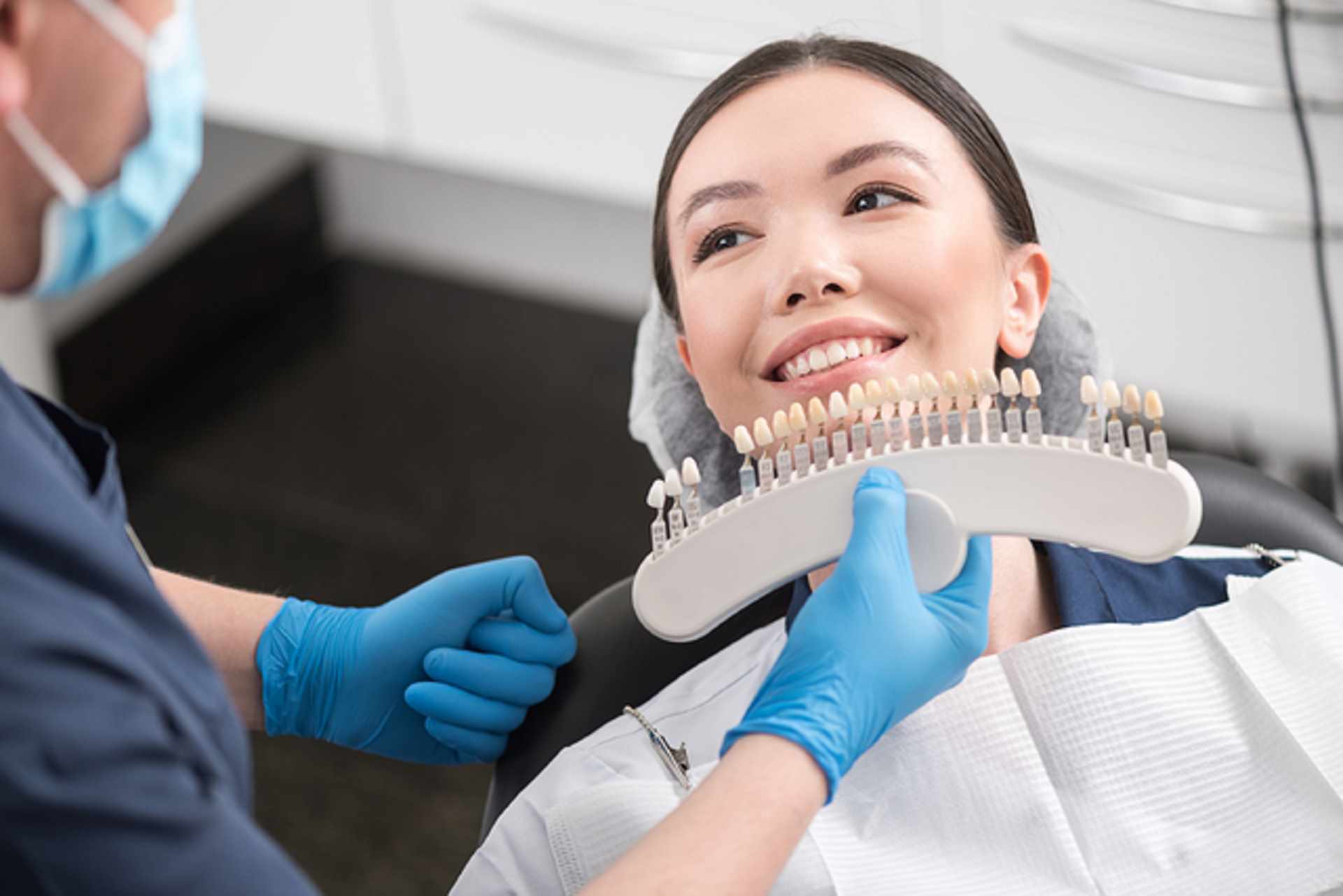Dental veneers are thin, individualized shells that are bonded to the front of teeth to enhance their general aesthetic.
When Would I Need Dental Veneers?
There are several issues that can be solved with the help of dental veneers. Some of those are:
- Teeth that are badly stained or discolored might not be amenable to teeth-whitening procedures. Dental veneers can be used to conceal stained teeth and produce a uniformly bright smile.
- Teeth that have been chipped or fractured can be unappealing and run the danger of suffering more harm. To cover the damaged region and shield the tooth from any further harm, veneers can be used.
- Dental veneers can be used to treat uneven or misshapen teeth. A dentist can mold and contour a tooth by covering it with a veneer to produce a more realistic-looking grin.
- Dental veneers can also be used to repair minor gaps between teeth. A dentist can produce a grin that is more even and appealing by installing a veneer over the teeth.
- Dental veneers can also be utilized to make the appearance of crooked teeth appear straighter. Veneers can help hide mild crookedness and produce a more visually appealing smile, although they can’t fix severe misalignment.
- Teeth that are eroded away due to grinding or other problems can be restored with veneers. A dentist can make the tooth seem and feel more natural by covering it with a veneer.
What are the Types of Dental Veneers?
Dental veneers come in two major varieties: porcelain veneers and composite veneers
Porcelain veneers do a wonderful job at enhancing the appearance of teeth. They’re thin, custom-made shells called veneers that are applied to the front surface of the teeth. Composite veneers are designed from a tooth-colored resin that is also placed onto the outward surface of your teeth. Each one of these coverings may need to be adjusted or trimmed to fit you precisely.
What is the Process Like?
Getting porcelain veneers typically involves the following steps:
- Consultation: The first step is to make an appointment for a consultation with a dentist near you who has knowledge of how to install porcelain veneers. The dentist will look at the patient’s teeth during the consultation and go over their expectations and goals for the procedure.
- Preparation: The next stage is to prepare their teeth for the veneers if the patient and dentist feel that porcelain veneers are the best solution. To make room for the veneers, a tiny layer of enamel must be removed off the front surface of the teeth. After preparing the teeth, the dentist will make impressions of them and send those to a lab, where the bespoke veneers will be made.
- Temporary veneers: They may be applied to the teeth to protect them while the permanent veneers are being made, as well as to give the patient a preview of the finished product.
- Bonding: The patient must return to the dentist’s office for the final bonding procedure after the permanent veneers are prepared. The dentist will apply the veneers to the teeth and evaluate how well they fit and look. The dentist can make any necessary modifications at this time. The dentist will use a specific glue to adhere the veneers to the teeth once they are in the ideal location.
- Follow-up: The dentist will examine the patient’s bite following the bonding of the veneers and make any last-minute corrections that are required. Also, patients will be given information on how to take care of their new veneers, such as the right way to brush and floss their teeth and any food restrictions.
In general, porcelain veneers near you may prove to be flexible and successful cosmetic dental procedures. With the use of dental veneers, you can improve the appearance and confidence of your smile by working with a dentist near Kissimmee to determine the ideal treatment plan for your needs.
Visit Smile 101 to get porcelain veneers near Kissimmee at a dentist near you.
